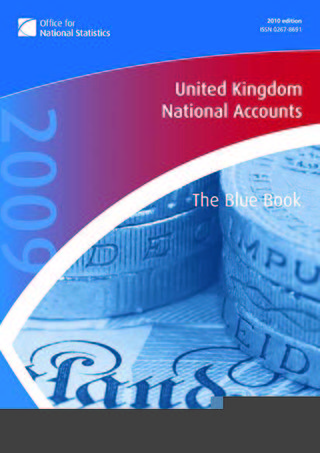Purpose
The purpose of the Voorburg Group (VG) is to address issues related to the production of service statistics, including service product outputs and inputs, the estimation of the real product of service activities, price indices of service products and industries, and their implications for product and industry classification (Central Product Classification (CPC) and International Standard Classification of All Economic Activities (ISIC)).
In 2005, the VG received a renewed mandate from the United Nations Statistical Commission concerning its objective, focus and scope. The objective of the VG is to establish an internationally comparable methodology for measuring the constant dollar outputs of the service industries. The focus of the VG is to develop concepts, methods, and best practices in the area of services. The scope of the VG is centered on producer price indices (PPIs) for services, turnover by products, and classifications.
The Voorburg Group has contributed over the years to building up and sharing a considerable and growing body of knowledge of Service Sector Statistics. It has prompted international cooperation in the development of standards and has assisted in resolving statistical and measurement challenges in the Service Sector.

In macroeconomics, an industry is a branch of an economy that produces a closely related set of raw materials, goods, or services. For example, one might refer to the wood industry or to the insurance industry.

The tertiary sector of the economy, generally known as the service sector, is the third of the three economic sectors in the three-sector model. The others are the primary sector and the secondary sector (manufacturing).

Once a single-crop agricultural economy, Saint Lucia has shifted to a tourism and banking serviced-based economy. Tourism, the island's biggest industry and main source of jobs, income and foreign exchange, accounts for 65% of its GDP. Agriculture, which was once the biggest industry, now contributes to less than 3% of GDP, but still accounts for 20% of jobs. The banana industry is now on a decline due to strong competition from low-cost Latin American producers and reduced European trade preferences, but the government has helped revitalize the industry, with 13,734 tonnes exported in 2018. Agricultural crops grown for export are bananas, mangoes, and avocados. The island is considered to have the most diverse and well-developed manufacturing industry in the eastern Caribbean.

The North American Industry Classification System or NAICS is a classification of business establishments by type of economic activity. It is used by government and business in Canada, Mexico, and the United States of America. It has largely replaced the older Standard Industrial Classification (SIC) system, except in some government agencies, such as the U.S. Securities and Exchange Commission (SEC).
The Standard Industrial Classification (SIC) was a system for classifying industries by a four-digit code as a method of standardizing industry classification for statistical purposes across agencies. Established in the United States in 1937, it is used by government agencies to classify industry areas. Similar SIC systems are also used by agencies in other countries, e.g., by the United Kingdom's Companies House.

The healthcare industry is an aggregation and integration of sectors within the economic system that provides goods and services to treat patients with curative, preventive, rehabilitative, and palliative care. It includes the generation and commercialization of goods and services lending themselves to maintaining and re-establishing health. The modern healthcare industry includes three essential branches which are services, products, and finance, and may be divided into many sectors and categories and depends on the interdisciplinary teams of trained professionals and paraprofessionals to meet the health needs of individuals and populations.
In economics, an input–output model is a quantitative economic model that represents the interdependencies between different sectors of a national economy or different regional economies. Wassily Leontief (1906–1999) is credited with developing this type of analysis and earned the Nobel Prize in Economics for his development of this model.

The Producer Price Index (PPI) is the official measure of producer prices in the economy of the United States. It measures average changes in prices received by domestic producers for their output. The PPI was known as the Wholesale Price Index, or WPI, up to 1978. It is published by the Bureau of Labor Statistics and is one of the oldest economic time series compiled by the Federal government of the United States.
The Global Industry Classification Standard (GICS) is an industry taxonomy developed in 1999 by MSCI and Standard & Poor's (S&P) for use by the global financial community. The GICS structure consists of 11 sectors, 25 industry groups, 74 industries and 163 sub-industries into which S&P has categorized all major public companies. The system is similar to ICB, a classification structure maintained by FTSE Group.
The United Nations Statistics Division (UNSD), formerly the United Nations Statistical Office, serves under the United Nations Department of Economic and Social Affairs (DESA) as the central mechanism within the Secretariat of the United Nations to supply the statistical needs and coordinating activities of the global statistical system. The Division is overseen by the United Nations Statistical Commission, established in 1947, as the apex entity of the global statistical system and highest decision making body for coordinating international statistical activities. It brings together the Chief Statisticians from member states from around the world.
The International Standard Industrial Classification of All Economic Activities (ISIC) is a United Nations industry classification system. Wide use has been made of ISIC in classifying data according to kind of economic activity in the fields of employment and health data.
The Central Statistics Office (CSO) is a governmental agency in India under the Ministry of Statistics and Programme Implementation responsible for co-ordination of statistical activities in India, and evolving and maintaining statistical standards. It has a Graphical Unit. The CSO is located in Delhi. Some portion of Industrial Statistics work pertaining to Annual Survey of industries is carried out in Calcutta. It deals with statistical data of different departments.
Sir Harry Campion, KCB, CBE was a British statistician and the first director of what was the Central Statistical Office of the United Kingdom. He was also first director of the United Nations Statistical Office. He played a leading role in the development of official statistics, nationally and internationally, after the Second World War.
The Ministry of Statistics and Programme Implementation (MoSPI) is a ministry of Government of India concerned with coverage and quality aspects of statistics released. The surveys conducted by the Ministry are based on scientific sampling methods.

Official statistics are statistics published by government agencies or other public bodies such as international organizations as a public good. They provide quantitative or qualitative information on all major areas of citizens' lives, such as economic and social development, living conditions, health, education, and the environment.
An economic taxonomy is a system of classification of economic activity, including products, companies and industries. Some economists believe that the study of economic policy demands the use of a taxonomic/classificatory approach.
Comext is a statistical database on trade of goods managed by Eurostat, the Statistical Office of the European Commission. It is an important indicator of the performance of the European Union (EU) economy, because it focuses on the size and the evolution of imports and exports.
The United States Economic Census is the U.S. federal government's official five-year measure of American business and the economy. It is conducted by the U.S. Census Bureau, and response is required by law. Forms go out to nearly 4 million businesses, including large, medium and small companies representing all U.S. locations and industries. Respondents are asked to provide a range of operational and performance data for their companies. Trade associations, chambers of commerce, and businesses use information from the economic census for economic development, business decisions, and strategic planning purposes. The last Economic Census was conducted for the year ending December 2017.
Natural capital accounting is the process of calculating the total stocks and flows of natural resources and services in a given ecosystem or region. Accounting for such goods may occur in physical or monetary terms. This process can subsequently inform government, corporate and consumer decision making as each relates to the use or consumption of natural resources and land, and sustainable behaviour.

The annual United Kingdom National Accounts records and describes economic activity in the United Kingdom and as such is used by government, banks, academics and industries to formulate the economic and social policies and monitor the economic progress of the United Kingdom. It also allows international comparisons to be made. The Blue Book is published by the UK Office for National Statistics alongside the United Kingdom Balance of Payments – The Pink Book.







